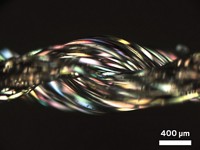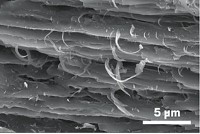Advertisement
Grab your lab coat. Let's get started
Welcome!
Welcome!
Create an account below to get 6 C&EN articles per month, receive newsletters and more - all free.
It seems this is your first time logging in online. Please enter the following information to continue.
As an ACS member you automatically get access to this site. All we need is few more details to create your reading experience.
Not you? Sign in with a different account.
Not you? Sign in with a different account.
ERROR 1
ERROR 1
ERROR 2
ERROR 2
ERROR 2
ERROR 2
ERROR 2
Password and Confirm password must match.
If you have an ACS member number, please enter it here so we can link this account to your membership. (optional)
ERROR 2
ACS values your privacy. By submitting your information, you are gaining access to C&EN and subscribing to our weekly newsletter. We use the information you provide to make your reading experience better, and we will never sell your data to third party members.
Materials
Brown Recluse Spins Studded Ribbons
Spider’s unusual webbing could lead to better understanding of silk, better synthetic silk films
by Craig Bettenhausen
October 28, 2013
| A version of this story appeared in
Volume 91, Issue 43
Loxosceles laeta, the brown recluse spider, is feared for its venom, which can cause gangrenous lesions. But it is the unusual studded ribbons the spider spins from its silk that lured Fritz Vollrath of the University of Oxford and Hannes C. Schniepp and Sean R. Koebley of the College of William & Mary into its web (Adv. Mater. 2013, DOI: 10.1002/adma.201302740). Most spiders and silkworms spin smooth cylindrical filaments, but L. laeta instead makes 40–80-nm-thick, 6–9-μm-wide films dotted with nanosized bumps. When the team probed the mechanical properties of the film via atomic force microscopy, they found that despite their simple structure, the ribbons are as strong as the best silk filaments and are far superior to artificial silk films. The researchers propose that the studs make the silk stickier, and the easily deformable flat shape of the silk increases the area that comes in contact with other surfaces. They say the unusual webbing could help scientists better understand the structure of silks and allow them to design a new generation of silk-based materials.





Join the conversation
Contact the reporter
Submit a Letter to the Editor for publication
Engage with us on Twitter